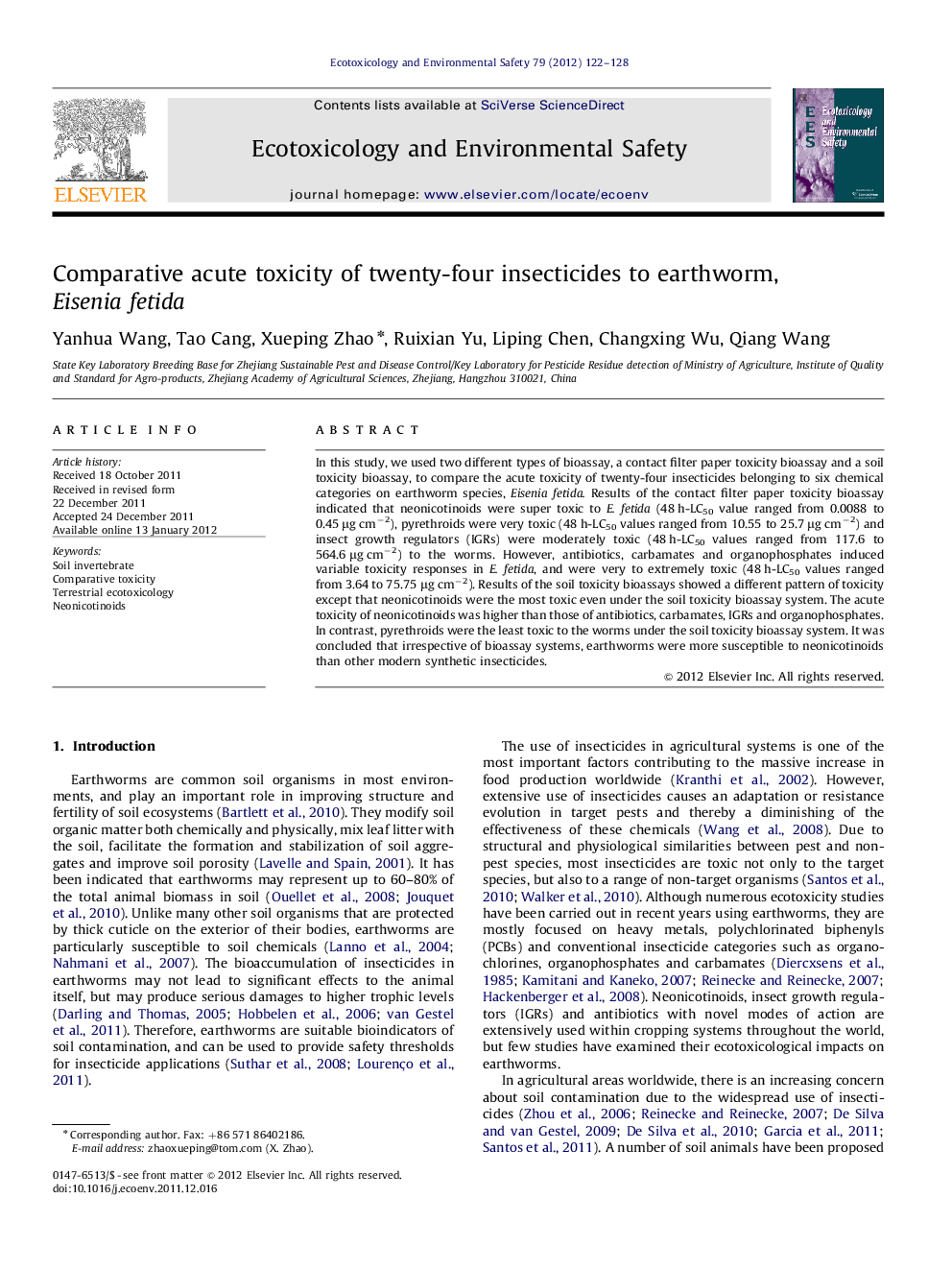| Article ID | Journal | Published Year | Pages | File Type |
|---|---|---|---|---|
| 4420981 | Ecotoxicology and Environmental Safety | 2012 | 7 Pages |
In this study, we used two different types of bioassay, a contact filter paper toxicity bioassay and a soil toxicity bioassay, to compare the acute toxicity of twenty-four insecticides belonging to six chemical categories on earthworm species, Eisenia fetida. Results of the contact filter paper toxicity bioassay indicated that neonicotinoids were super toxic to E. fetida (48 h-LC50 value ranged from 0.0088 to 0.45 μg cm−2), pyrethroids were very toxic (48 h-LC50 values ranged from 10.55 to 25.7 μg cm−2) and insect growth regulators (IGRs) were moderately toxic (48 h-LC50 values ranged from 117.6 to 564.6 μg cm−2) to the worms. However, antibiotics, carbamates and organophosphates induced variable toxicity responses in E. fetida, and were very to extremely toxic (48 h-LC50 values ranged from 3.64 to 75.75 μg cm−2). Results of the soil toxicity bioassays showed a different pattern of toxicity except that neonicotinoids were the most toxic even under the soil toxicity bioassay system. The acute toxicity of neonicotinoids was higher than those of antibiotics, carbamates, IGRs and organophosphates. In contrast, pyrethroids were the least toxic to the worms under the soil toxicity bioassay system. It was concluded that irrespective of bioassay systems, earthworms were more susceptible to neonicotinoids than other modern synthetic insecticides.
► All the insecticides tested had a certain acute toxicity to Eisenia fetida. ► Each insecticide tested showed different degree of toxicity to E. fetida. ► Neonicotinoids exhibited the highest acute toxicity under two bioassay systems. ► Pyrethroids showed the least toxicity to E. fetida using artificial soil test.
